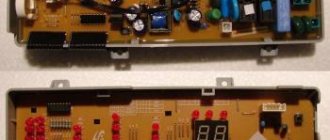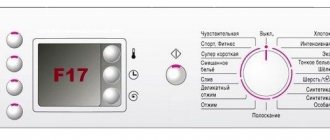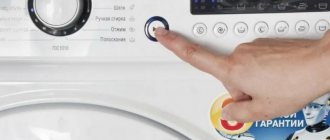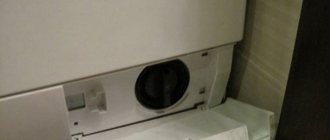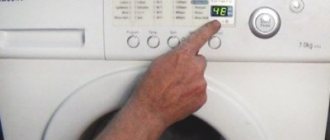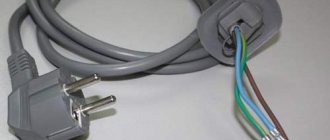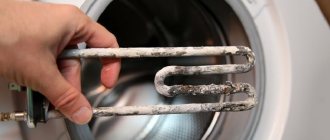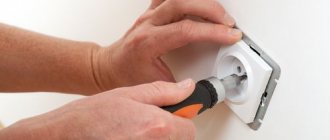Just a couple of decades ago, rural residents could not even suspect such a miracle of technology as an automatic washing machine.
After all, living conditions in the village are different and very different from urban ones. This means that not every device could be freely used in the house.
Often in villages there are no such amenities of civilization as running water and sewerage, so almost no one believes in the existence of automatic machines for rural areas.
To everyone’s joy, modern equipment manufacturers have not ignored these people, and they are directing their efforts to developing machines that can be installed without running water or sewerage, which is very convenient in rural homes.
About existing connection options
The main condition for any option is the organization of water supply under certain pressure indicators. There are several solutions to get the result:
- Adding water manually. Water is added through the detergent compartment added to the machine. But there is also a significant drawback - the device stops every time the program ends. To continue working, you need to add water. This process can be quite labor intensive and time consuming.
- Installation of pumping stations to which you can connect a washing machine in the country. Such decisions are associated with additional financial costs. And such expenses are not always justified, especially if the dacha is used only in the summer, and only the washing machine requires connection. A source of clean water is important, but such amenities are not always available.
- Creating pressure artificially. The result can be achieved by placing the water tank significantly higher compared to the washing machine. An 8-10 meter indicator is considered optimal. You can completely cope with the work if you have two floors and an attic. But the downside is that water is always delivered to the second floor.
- Imitation of a pumping station. A pump with small dimensions is installed between the water tank and the washing machine. The method does not require financial investments, which is why many consider it the best way to connect an automatic washing machine in the absence of running water in the village.
Container for detergents (manual method)
It is assumed that during this type of work water is poured in and drained out manually. Sometimes the choice is made in favor of semi-automatic machines. Placement will not cause much trouble due to the small dimensions of the equipment. Low price and high maintainability compensate for the lack of access to some other useful functions when connecting a washing machine without running water using a container or other methods.
With the manual washing method, the most serious drawback is the large amount of manual labor. The quality of the result often depends on the heating, and it is not always possible to raise the temperature high enough. To remove foam, a large amount of water is used for rinsing.
Container with water
To create additional pressure in the system, you can select liquid reservoirs. The best option is if the house has a second floor. The downside is the need to carry water to refill the tank. If you have a large house, work may become problematic.
Some manufacturers produce washing machines that are initially equipped with an additional tank. They are great for rural areas where high pressure is difficult to obtain.
Let us assume that such tanks are manufactured independently. To create the required pressure, the device is placed under the machine. You can purchase any equipment; you don’t have to choose a specific manufacturer, including in the countryside.
Well drilling
It’s good if there is already a well on the site. Then you only need to install a powerful pumping station to organize uninterrupted operation. Otherwise, you will have to call a team of specialists to organize drilling. But it is necessary to take into account several factors with which such work is associated:
- team work and equipment rental require additional costs;
- the best time for drilling is summer;
- It is recommended to use only good quality water. Otherwise, there is a high probability that in some cases the clothes will not be washed at all. But a well will be a great way to save money.
Pump
You can install a system that has two main components - a water tank and an electric pressure pump. In terms of cost and efficiency, it is one of the most profitable solutions.
From the reservoir, water enters the automatic machine under a certain pressure, which is created thanks to the pump. If the process is not automated, then you have to manually turn the device on or off each time. At the same time, you need to monitor the level at which the water is in the machine.
The following spare parts are needed to create a pump yourself:
- Electromagnetic relays, reed switches.
- Measuring and installation devices.
- Tee taps to shut off the water if necessary.
- Several meters of hose where the pipeline runs.
- Silicone based sealant.
- Set with flow filters.
- Sets with gaskets, clamps.
- Barrels or other containers for liquids.
- Pumping devices.
It is recommended to choose pumps from the same manufacturer as the washing machines themselves. An additional splash-proof lid wouldn't hurt either.
The system is assembled and connected in the following order:
- First, choose the place where the device will be installed. The smoother the surface, the better. It would be good if it was initially made of concrete. There must be a socket within reach of the wires;
- A container with a suitable volume is mounted nearby. It is desirable that there is a lid, it makes operation more convenient;
- a stand for a barrel with a height of about a meter also adds comfort;
- A hole is made on the wall of the tank in the lower part. Then they use a tee tap with a certain position for fastening;
- The tap and the pressure hose are connected to each other. The other end is connected to the pump;
- The adapter is used to attach the discharge hose to the intake hose of washing machines. The washing machine may start working.
All that remains is to remove the top cover of the machine and find a suitable valve. To improve water flow, the seals are pulled out from the inside. So-called flow filters are installed in front. You just need to check if the system is working.
Using Well Water
It is assumed that one of the autonomous water sources will be used. To do this, you need to drill a hole and then connect the equipment according to the diagram specified by the manufacturer. Additional fastenings and the tightness of the holes deserve special attention. Only in this case is it necessary to achieve results.
A normally closed solenoid valve is used to connect machines in most cases. It does not allow water to pass through until electricity is supplied to the terminals. Therefore, it is important to correctly connect the contacts from the pump. Then the locking device will become the control relay.
This is interesting: How to choose built-in household appliances for the kitchen
Automatic washing machines in the village
If the village has running water, then installing an automatic washing machine becomes quite possible. The main thing is that the pressure meets the technical requirements for the operation of the device. Usually it is possible to use the most undemanding and simple devices, designed for 3.5 kg and with a minimum speed of 600–800 rpm.
In principle, the lack of water supply is not an obstacle to the use of automatic washing machines. To operate correctly, machines without a tank require a water supply, and how it is organized is absolutely unimportant to the machine. If there is a well with a submersible pump, then water supply can be organized. The most difficult thing about connecting the SMA to water is ensuring the required pressure.
What if there is no running water?
The washing device is connected to a well, well or other autonomous source. Water supply is carried out by means of a pump. In principle, an ordinary container of water can play the role of a source.
- You need a 100 liter barrel and a stool 0.5 m high.
- A hole with a diameter of 5 cm is drilled in the stool.
- A hole is also drilled in the bottom of the barrel. Its diameter must match the external thread of the ball valve.
- The valve fitting is attached to the bottom of the barrel and tightened with a lock nut placed on the thread from the inside.
- The barrel is placed on a stool, the valve is passed into a hole drilled in the stool.
- Check the tightness of the barrel. If there is a leak, silicone is added under the locknut.
- They take a pump - the most ordinary one - and solder 1.5 m long wires to the power terminals.
- They open the housing, study the electrical circuits, and find a bypass valve that controls the filling of liquid.
- The SMA is usually connected to the water supply through a normally closed solenoid valve, which does not allow liquid to pass through until electricity is applied to the terminals. The pump contacts are connected to the wires leading to the valve - the shut-off device turns into a control relay. Then solder the wires from the pump to the valve terminals. The housing is closed and plugged into the network.
You won’t have to do any of this if you buy an SMA that already has a “barrel” attached to it. Such models are present in small quantities on the Russian market.
SMA with tank
The SMA with an additional water tank works exactly the same as conventional models. The tank attached to the body is the only difference between the “village” cars. However, their use is not limited to the private sector; such devices are often installed on the top floors of high-rise buildings where there is a lack of pressure.
The appearance and internal design of models with a reservoir are the same as their conventional counterparts. If you unhook the tank, the washing machine will take on the most ordinary appearance. It is mounted on the side or on the back wall, its capacity is 65–100 liters. The water supply is enough for several washes.
- Loading is front only.
- The tank volume is enough, depending on the selected mode, for 1–2 cycles.
- Liquid is supplied to the reservoir automatically or manually.
- The device collects liquid in the same way as devices connected to a centralized water supply do.
- If there is not enough water to continue the cycle, the device signals this - the user adds water, and this can be done during the cycle.
- Draining is done through the drain hose. Where to connect it is up to the user. You can drain the water into the sewer network, and if there is none, into any container of suitable volume.
How to start?
To start an SMA that works without connecting to a water supply, you need to perform a number of steps:
- Make sure the SMA is on a level surface.
- Check that the outlet is working properly and connect the device to it.
- Make the first run idle - without underwear.
- Add detergent, load laundry and add water. It doesn’t matter how you fill the container - manually or from the water supply. If there is a built-in pump, the device will take the required volume of liquid - 90–100 liters. Now you can turn on the device.
Advantages and disadvantages
Advantages of SMA with reservoirs:
- Allows you to do laundry “city style” in the village. There is no need to manually fill and drain water, wring out laundry by hand or transfer it to a centrifuge.
- No centralized water supply is required.
- You can wash clothes if there are any problems with water, which is why these machines can also be installed in city apartments - in case of water shortages.
- Economical consumption of electricity and water. The user has the ability to control the flow of water. If the supplied quantity is not enough, the device will signal that an additional portion is required.
- Many programs and modes.
- Large dimensions. This is especially true for small apartments and small private houses - a lot of space needs to be allocated for the device.
- There are models in which the tank is not detachable. Even if the owner no longer needs it, it can no longer be removed. This must be taken into account when installing the machine, or choose a universal model that can work both with a tank and with water supply.
- You have to control the amount of liquid in the tank and add it as needed.
What technologies?
Gorenje with a tank, like other machines, has enough technical capabilities for high-quality washing. Along with the usual technical solutions, they also have features that set them apart from their competitors.
Technologies and technical solutions used at Gorenje:
- The surface of the drum is ridged. With the help of ridges, liquid is captured from the bottom. This solution, the “Shower System,” improves the quality of washing.
- UseLogic - ensures minimal water consumption. Sensors monitor the purity of the water, determining whether additional rinsing is needed. For each cycle, the optimal volume of liquid is calculated, taking into account the weight of the laundry loaded into the drum.
- NickelHeater is a durable heating element. Has a smooth nickel-plated surface. Scale forms on it less actively.
- Balancing control system - for uniform distribution of laundry throughout the drum. As soon as an imbalance appears, the motor stops and then begins to rotate in the opposite direction.
How to choose an SMA with a tank?
When choosing a suitable model, pay attention to the following characteristics:
- Dimensions. For a spacious room, you can take the option with a side-mounted container. If there is a shortage of space, modifications in which additional capacity is located at the rear are more suitable.
- Volume. From 50 to 100 l. The larger the container, the better - you will have to fill it less often.
- Energy class. The optimal value is class A and higher.
- Water consumption. 9.2–9.3 thousand liters per year.
- Presence of a fill valve. This element is necessary to prevent overflow - but not all models have it.
- Spin speed. Up to 1000 rpm. The best option is a modification with a choice of spin speed.
- Loading. From 6 to 7 kg.
How to organize laundry in the village?
To take advantage of automatic washing machines (WMA), you must have the appropriate amenities of civilization in your home:
- electricity;
- water supply with good pressure;
- sewer drain.
Everything is fine with the electricity supply in the villages, sewerage can be installed - not a big problem, but as for the water supply, everything is more complicated. Most villages do not have a water supply network, but even if they do, the pressure in it is not enough for the normal functioning of the SMA. The issue of organizing laundry at a dacha or in a country house has several solutions, let’s try to find the best.
Washing machines for the village
For rural areas, washing machines can be used:
- Semi-automatic. If you have a house without running water, a semi-automatic machine is a good solution. Liquid is poured into the tank from above - with a bucket or hose from some large container. The disadvantage of such machines is the need for human control. You need to add water, drain, rinse, and wring out.
- Mini washing machines. Small machines for the dacha - “Slavda”, “Fairy”, “Rainbow” and the like, are suitable for those who do a little laundry and have problems with water. These washing machines allow you to wash things without connecting to a water supply, and they use very little water. The capabilities of these machines are limited; their load is only 2–3 kg.
- SMA. Regular or with tank. True, in the first case you will have to tinker with organizing the water supply. For houses without water supply, the second option is more suitable.
Advantages and disadvantages
A washing machine for a dacha without running water has a number of undoubted advantages , which makes many owners of country houses choose it, and also has several disadvantages:
It does not require connection to a central water supply and sewerage system.
This machine is compact and can be easily transported from place to place. It can be stored in the pantry and taken out into the bath while washing. This is especially true for owners of small premises.
A semi-automatic washing machine is ideal for those who often change their place of residence, because transporting it in a passenger car will not be difficult.
Activator washing machines are not demanding on water quality. In automatic washing machines, scale forms much faster due to the presence of a heating element in its design.
Possibility of using any detergent, including soap shavings or shampoo.
Simplicity of design ensures reliable operation. These machines rarely break down. Even if a breakdown occurs, service specialists will be able to repair any model of semi-automatic washing machine.
The need for human participation in the washing process. Physical participation or observation is required at all stages of the cycle. First you need to draw water, then connect the drain hose. If the machine has two tanks, then for spinning you need to transfer the laundry from the tank to the drum.
The water does not heat up.
Lower quality of washing compared to automatic washing machines.
High noise level, especially during spinning.
The need to manually rinse washed laundry.
Features and requirements for dacha models
The main thing is that the house has a constant supply of electricity and the ability to drain water.
Determine whether there is a permanent water supply in the house and what exactly you need from the device. If there is a constant water supply, then almost any model will do.
If a family lives in a country house only on weekends, a small simple unit is enough. But if the cottage is used all year round, then it is wiser to choose a machine with a full range of functions.
A washing machine for a summer residence must meet the basic requirements:
- Compactness. So that the machine can be easily transported.
- Low power. Electrical wiring in a rural house is not always reliable.
- Low water consumption. This is important if you have to fill the tank with water manually.
- Low electricity consumption.
This is interesting: Rating of the best headphones under 2000 rubles in 2021 (TOP 10)
Are all cars heated?
The usual function in automatic machines is not always available in a simple design. Some manufacturers have equipped the device with the technical capabilities to heat water at the initial stage of washing. In the future, the device simply maintains the temperature.
Don't overpay for a washing machine for the village. To do this, you need to identify the most necessary requirements for it and abandon unnecessary additions.
Factors on which the price depends:
- Tank size and volume. With a larger tank capacity the price is higher.
- Well-known and reliable manufacturer. They often overpay for the brand.
- Control type. Models come with activator control and semi-automatic.
- Spin and water heating function.
- Washing class and additional functions.
- Power consumption.
- Additional water tank and other accessories.
conclusions
- The best solution to the problem of washing in the village is the Gorenye model with tanks.
- An additional tank can be filled with water - well, rain, etc.
- Lack of running water is not a reason to refuse SMA.
- Thanks to washing machines with additional capacity, rural users are freed from unnecessary fuss with laundry.
The problem of laundry in the village is best solved by SMA from Gorenje. Today this is the simplest and most effective way to wash clothes efficiently. The process differs in only one stage - collecting water into the tank.
What it is?
The washing machine can operate without being connected to a water supply. Appliances with a tank can be filled with any washing water. A washing machine without plumbing works just as well as conventional options. The advantages of this technique.
- You can even use rainwater to wash things.
- If you have a well or well, you can use the equipment and not worry about the water bill. This way, washing turns out to be quite economical, because you only need to pay for powder and electricity.
- A manual machine will save money, while an automatic machine will make washing as simple and fast as possible.
- The machine, which does not require connection to a water supply system, can operate under almost any conditions. All that matters is the availability of electricity.
Automatic machine with tank=»subtitle»>
If everything you have read so far has not inspired you to buy a semi-automatic machine for your dacha, then there is another, more technically attractive option - an automatic washing machine with a water tank. It is attached to the back or side. Such a device works like a regular machine, with the only difference that the water comes not from the water supply, but from the tank. There is enough water in the filled tank for at least one wash.
The main disadvantage of automatic tank machines compared to semi-automatic machines is their price. But you always have to pay extra for comfort.
As you can see, even at the most ordinary grandmother’s dacha you can settle down comfortably and save yourself from grueling hand washing in basins or ponds. After a day of work, you can immediately wash all your work clothes to remove soil, fertilizers and other typical dacha contaminants. And sometimes such simple machines can be useful in a city apartment.
Features of washing machines with a water tank
In this case, to thoroughly wash things, the user will only have to fill the tank and select the required program.
At the end of the cycle, the waste water will be drained into a separate container - to avoid a flood, it must be emptied in time.
In appearance, the washing machine is practically no different from classic models.
However, there is a reservoir located on the side or back of the appliance.
In this case, there is no need to connect the drain hose to the sewer, as in traditional designs.
Unlike models familiar to users, washing machines with a water tank have their own advantages , among which there are such items as:
- simplifying the washing process;
- saving volumes of water and electricity;
- ease of operation and maintenance;
- variety of programs and washing modes;
- no need to connect the device to the water supply;
- affordable price.
Methods for connecting and draining water
In the absence of running water
In the absence of a central water supply, water is taken from an attached tank. To do this, use large containers made of durable materials.
Modern automatic washing machines use pressurized water. The required water pressure is ensured by installing tanks above the level of the inlet valve at a height of at least 10 meters.
If it is not possible to install such a tank, use another method. To do this, the container is placed on the same level as the machine.
Water is drawn in using an additional water pump. The inlet valve of the washing machine is connected via a hose to the outlet socket of the pump.
The inlet socket of the pump is inserted into a hole previously made in the wall of the tank. The joining area is carefully processed and sealed.
In the absence of sewerage
In the absence of an organized drainage system, a cesspool is installed to drain used water. The minimum depth of the drainage pit should be at least 1.2-1.5 m.
The walls of the pit must first be strengthened to protect against collapse. The surface of the outlet pipe should be pre-cleaned and treated with a primer. To protect against freezing, the pipe must be carefully insulated with mineral wool.
To protect plants from damage by chemical reagents, the pipe outlet should not be located in close proximity to country plantings.
All of the above recommendations will allow you to perform washing with maximum efficiency without connecting to water supply and sewerage.
Tips for connecting a washing machine (in the absence of running water)
Installing a washing machine for a summer house without running water is not difficult. It is important to choose the right place. It must be level so that the device does not vibrate during operation. If a water tank will be used, you need to provide a place for it. is connected to the outside of the housing , the end of which should preferably be led into a drainage pit . It must be lower than the top of the drain hose, that is, it must be tilted so that dirty water can drain spontaneously.
There are a lot of mini washing machines for summer cottages on the market. They must be selected as carefully as a standard model. Since they differ in the set of programs and technical parameters.
| from 8.5% per annum Up to 5 million rubles According to passport | Online application |
| from 9.9% per annum Up to 3 million rubles Without 2-NDFL certificate | Online application |
| from 9.9% per annum from 10,000 to 1,000,000 rubles | Online application |
| from 9% per annum from 25,000 to 1,500,000 rubles | Online application |
| from 15.9% per annum to 300,000 rubles only with a passport | Online application |
| from 7.7% per annum to 5 million rubles | Online application |
| from 12% per annum Up to 2,000,000 rub. According to the passport, without certificates | Online application |
| Rate from 9.4% to 5,000,000 rubles | Online application |
? Top 10 washing machines for the garden
Similar articles
How to choose a built-in washing machine
Narrow washing machine dimensions
Electrolux ew6s4r06w reviews
Trolley for transporting refrigerators and washing machines
Which washing machine is better - LG or Bosch
Rating of 40-inch TVs: the best budget models
Types of washing machines with a tank
Washing machines with an external tank are classified according to:
- I think:
- automatic;
- semi-automatic;
- Constructions:
- drums;
- activator;
- Size:
- narrow - depth up to 44 cm and loading up to 6 kg of things;
- full-sized - up to 60 cm deep and loading up to 7 kg of laundry.
- Tank placement:
- on the back wall;
- on the side of the body.
- Loading:
- horizontal;
- vertical.
Tanks can be attached or built-in. They differ in material of manufacture and capacity. There are models of washing machines with stainless steel tanks or plastic containers . The last option is easier and cheaper. It reduces the weight of the structure and dampens vibration. A stainless steel tank costs more and lasts longer.
Models of devices with a tank have a variety of functionality. There are from 1 to 25 washing programs, different spin speeds and power. There are universal devices that can be connected to a water supply or an external tank.
Review of the best models
The best washing machines for the dacha according to statistics and customer reviews:
Slavda WS-30ET
Activator model with vertical loading. The maximum weight of laundry is 3 kg. You can fill the machine while washing. The average price is 3,400 rubles.
Advantages:
- low price;
- high quality washing,
- compactness;
- average noise level;
- quick wash;
- simple controls.
Flaws:
- the drainage system is not thought out;
- plastic control knobs.
Assol XPB45-255S
Semi-automatic with spin function with plastic tank and vertical loading. The maximum weight of laundry is 4.5 kg; the centrifuge can hold 3.5 kg of clothes. The average price is 7,300 rubles.
Advantages:
- high-quality washing;
- spin almost dry;
- the price is average;
- small size.
The disadvantage is that the hose for collecting water is inconvenient.
Gorenje W 72ZY2/R+PS PL95
Advantages:
- washing without connecting to water supply;
- economical energy consumption;
- copes with all types of stains;
- quiet;
- doesn't wrinkle things.
Flaws:
- difficulties with water drainage;
- heavy weight.
VolTek Princess
Mini-machine of activator type with mechanical control. The average price is 3,500 rubles.
Advantages:
- You can wash small items up to 1 kg;
- takes up little space;
- washes well;
- you can observe the process in a transparent tank;
- Suitable for frequent use.
Flaws:
- short hose;
- short power cord.
For a comfortable life in a country house, you can use washing machines even in the absence of water supply. Manufacturers offer models of different types with different price categories, creating a wide selection of units that take the worry out of washing while outdoors.
Rating of the TOP 5 best washing machines with a water tank
| Place | Model | Price |
| #1 | Gorenje WP 7Y2/RV + REZERVOAR PL 95 | Find out the price |
| #2 | Gorenje WP60S2/IRV+ tank | Find out the price |
| #3 | Gorenje W1E70S2/RV+ tank | Find out the price |
| #4 | WILLMARK WM-20A | Find out the price |
| #5 | VolTek Rainbow SM-5 White | Find out the price |
Page navigation:
How to connect?
There are many ways that allow you to use a washing machine without running water. Popular connection options.
- Filling water manually. This method will require quite a lot of effort and time, but technically it is the most elementary. The machine will stop the program at those moments when water is required. Liquid can be supplied through a hose or from a bucket.
- Container for water. Some washing machines of this type have such a tank included. You must manually fill the tank and constantly adjust the water level in it. The design can be supplemented with a pump. In this case, you won’t have to install the tank too high, because the compressor will create the required pressure when supplying water. A 40 watt pump is sufficient.
- Well. It completely replaces the usual city central water supply. Installation and connection of the washing machine in this case are simplified as much as possible. It is worth noting that a well can only be drilled in the warm season. Additionally, a pumping station should be installed that will provide the required pressure when supplying water.
- Well. To implement this method, you will have to purchase a fairly powerful pump. Pipes should be run from the well.
The washing machine should be no further than 10-15 meters from the water source. Otherwise, the pump simply will not be able to cope with the task at the proper level.
The water intake hose must be equipped with a filter. It will get rid of sand and debris that may be in the well. If you do not use a filter, the equipment will quickly break down.
The most universal way to connect a washing machine without running water is to use a tank. Quite convenient if it is sold together with household appliances. It is this connection option that allows you to wash every day and not control the water supply process.
You need to install the tank like this.
- It is necessary to install a washing machine, there should be an outlet nearby. Moreover, it is important to consider the presence of a drain for pumping out used liquid.
- The barrel must be installed nearby . In this case, the tank rises 5 cm or higher from the machine itself. You can use furniture such as a cabinet or stool as a support. It is worth considering that a filled barrel weighs more than 100 kg.
- You need to take a fitting for the water supply . A hole is drilled at the bottom of the barrel, the diameter of which is equal to the outside of the part.
- The fitting is inserted into the hole with the valve screwed on. Lock nuts must be used to secure on both sides. Special linings should also not be neglected.
After all manipulations, you should pour a small amount of water into the tank. This will allow you to check the tightness. If necessary, the design should be corrected. Silicone can be added under the locknut for a better seal.
The following video provides an overview of a washing machine with a tank for a village or cottage.

